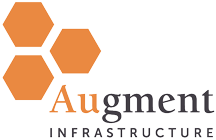Originally published in the October issue of Institutional Investing in Infrastructure (i3)
The next evolution
A new era of mid-market distributed infrastructure is unfolding
by Viktor Kats and Darius Lilaoonwala
Private sector infrastructure investing has undergone many changes in the past few decades. The privatization of government-held assets in the 1990s and 2000s paved the way for the development of new partnership mechanisms between the private and public sectors. These new partnerships created opportunities for investors to gain exposure to regulated assets and attractively priced government offtake contracts. Privatization and deregulation took place in many different countries, from Chile to Australia, and was seen as a replicable model for success, despite some initial setbacks.
In the 2010s and early 2020s, infrastructure became an established asset class characterized by a dynamic ecosystem of developers, operating companies and institutional investors. In many markets, this ecosystem has replaced incumbent infrastructure players through cycles of asset unbundling, new asset development, corporate restructuring and consolidation.
In addition, significant technological changes in sectors such as renewable energy and digital infrastructure have taken place to make infrastructure services more accessible and to generate individual assets smaller in scale, yet still competitive. In many countries, these technological changes, coupled with supportive regulatory environments, have resulted in the creation of new business models that no longer rely on sole government offtake contracts. Instead, under these new models, commercial and industrial customers are offered customized infrastructure services better suited to their needs.
Fast forward to today: Given the increased demand for energy, digital connectivity, supply-chain optimization and increasingly strained urban environments, Augment Infrastructure believes ideal conditions exist for the rapid expansion of private sector investment in infrastructure. However, the distribution of investments and business activity has grown at an uneven pace. The smaller end of the market has seen an increase in entrepreneurial activity, and large-scale infrastructure transactions have experienced increased competition for good assets. However, the bridge between these two ends of the market continuum, i.e., a mid-market growth accelerator, has been strained of capital and of market participants.
Augment Infrastructure believes this space presents attractive investment opportunities to support mid-market growth companies (i.e., businesses requiring $50 million to $150 million in capital) in countries with supportive regulatory environments and significant addressable markets. Unlike smaller-scale greenfield development projects, mid-market companies present a lower risk profile through asset and customer diversification, attractive asset-creation multiples and benefits of economies of scale. There is also a significant opportunity for continued value creation through improved governance processes, expanded access to debt, and partnerships with other regional and international players.
At the same time, in contrast with large-cap opportunities, mid-market companies are agile and better positioned to deliver a high level of customer service. They have motivated management teams and the potential to “move the needle” by scaling up rapidly. Furthermore, large investment opportunities often attract more investors who compete on cost of capital, thus driving down returns, which is not the case for mid-market companies.
Augment Infrastructure believes the current “barbell”-shaped infrastructure investment market creates attractive opportunities for deal sourcing from a multitude of available development platforms in need of growth capital, while also presenting convincing exit scenarios to large institutional investors who compete for well-established sizable platforms.
The case for distributed infrastructure
Infrastructure has historically been defined by large-scale, government-sponsored projects that took years to develop and hundreds of millions of dollars to execute. Physical assets, such as airports, toll roads and big power plants, had come to define the asset class. Large utilities or government entities were the only counterparts whose credit risk was considered acceptable for project finance lenders.
This familiar landscape that defined infrastructure investing for many years started to change in the late 2000s and early 2010s with the rapid advancement in technology, particularly in sectors such as renewable energy and digital infrastructure. Mobile data and competition changed the relationship between customers and providers of digital services. Solar technology made access to power on a smaller scale economically and operationally viable.
Technology enabled a new generation of entrepreneurs to launch an increasing number of infrastructure services companies based on new business models. These new companies challenged incumbent infrastructure players and lobbied for increasingly flexible regulations, but they have often been undercapitalized, forcing them to focus on incremental growth addressing the smaller end of the market. However, during the past 10 years, these once struggling infrastructure startups have become well-established companies that remained true to their original mission of growth and service to commercial and industrial customers.
As a result, a new secular trend across many infrastructure sectors has developed, characterized by smaller-scale physical assets, a larger number of individual clients and more diversified revenue streams. New business models rely on more flexible contracts of shorter duration with additional value-added services to create a loyal client base.
Augment Infrastructure believes this niche of distributed assets and revenues is attractive for many reasons. The physical assets are smaller in scale and are distributed, minimizing the risk of greenfield buildout and service disruption. These companies provide diversified revenue streams and increased profitability through additional services. Distributed infrastructure can be built at a modular pace as financing becomes available and avoids the risk of having to raise a large chunk of capital all at once. Having assets located all over a country or region (as compared with a large single asset) provides diversification of construction risk, protection against catastrophic natural events and the benefit of having multiple customers (as opposed to a single offtaker). Companies with distributed assets in multiple states or provinces are also less vulnerable to changes in state regulations.
Augment Infrastructure believes the nimble nature of mid-market distributed infrastructure companies is attractive, especially as they develop new business models, incorporate new technologies into their product offering and expand as a result of growing demand from their commercial and industrial customers.
Viktor Kats and Darius Lilaoonwala are managing partners at Augment Infrastructure, a U.S.-based fund manager focused on investing in growth markets in Asia and Latin America.
